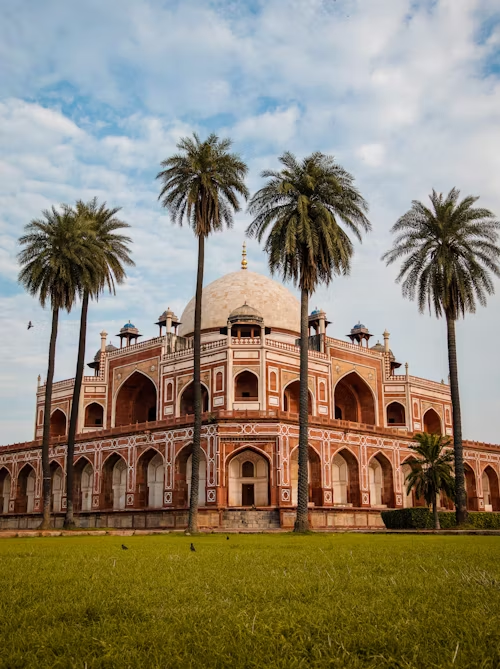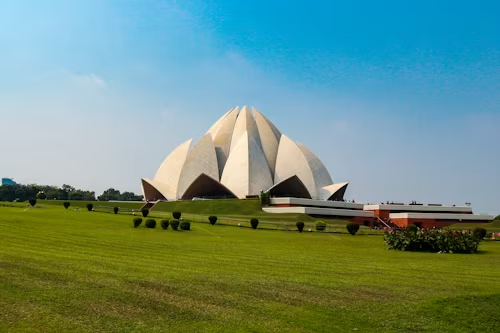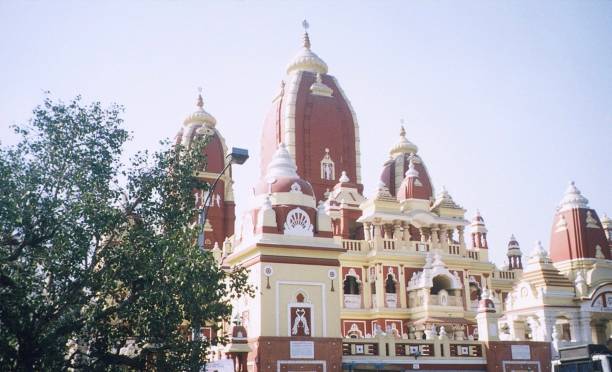A Journey Through Time: Must-Visit Historical Sites in India
I stood at the base of Qutub Minar, craning my neck to trace its towering spiral against Delhi’s hazy sky. At 73 meters, it felt like a silent storyteller, whispering tales of sultans and empires. My trip through India’s historical sites wasn’t just a vacation—it was a pilgrimage through centuries of culture, conquest, and devotion. From ancient wonders to modern landmarks, India’s heritage is a tapestry of stories etched in stone, marble, and faith. Let me take you on this journey, where every monument has a tale to tell.
India’s historical sites are more than just places to visit. They’re portals to the past, blending architectural brilliance with cultural depth. Whether you’re a history buff, a spiritual seeker, or a curious traveler, these landmarks offer something profound. In this guide, I’ll walk you through ten must-visit sites—ancient wonders, religious marvels, and modern icons—that define India’s soul. Each stop is a chapter in a story that’s been unfolding for millennia. Ready to explore?
Ancient Wonders
Qutub Minar: The Tower of Triumph

The first time I saw Qutub Minar, I was struck by its intricate carvings. Built in 1192 by Qutb-ud-din Aibak, this UNESCO World Heritage Site is the world’s tallest brick minaret. Its red sandstone and marble facade gleams under the Delhi sun, telling stories of the Delhi Sultanate’s rise.
- Why Visit? The minaret’s five stories, adorned with Arabic inscriptions, showcase Indo-Islamic architecture at its finest. The nearby Iron Pillar, rust-free after 1,600 years, adds a touch of mystery.
- Pro Tip: Visit in the early morning to avoid crowds and catch the sunrise glow on the carvings. Nearest metro: Qutub Minar Station (Yellow Line).
I wandered through the Qutub Complex, marveling at the Quwwat-ul-Islam Mosque and the unfinished Alai Minar. Each step felt like walking through a medieval history book, with every stone whispering tales of ambition and artistry.
Red Fort: The Heart of Mughal Grandeur

As I entered the Red Fort through Lahori Gate, I imagined Mughal emperors addressing their subjects from the Diwan-e-Aam. Built by Shah Jahan in 1648, this red sandstone fortress in Old Delhi is a symbol of India’s Mughal past and its fight for independence.
- Why Visit? The fort’s massive walls house treasures like the Diwan-e-Khas and an archaeological museum. It’s also where India’s flag is hoisted every Independence Day.
- Pro Tip: Catch the evening sound-and-light show to relive the fort’s history. Nearest metro: Chandni Chowk Station.
Walking through the fort, I could almost hear the echoes of royal decrees and the clatter of soldiers’ boots. It’s a living monument, pulsing with India’s storied past.
Humayun’s Tomb: The Precursor to the Taj

Humayun’s Tomb felt like a quiet oasis amidst Delhi’s chaos. Commissioned in 1570 by Emperor Humayun’s wife, this UNESCO site is a masterpiece of Mughal architecture, with its red sandstone and Persian-inspired gardens.
- Why Visit? Its symmetrical design and lush charbagh gardens inspired the Taj Mahal. The tomb’s serene ambiance is perfect for reflection.
- Pro Tip: Visit on a Friday for free entry and explore the nearby Nizamuddin Dargah for a spiritual double-header. Nearest metro: Hazrat Nizamuddin Station (Orange Line).
As I strolled through the gardens, the tomb’s red-and-white facade seemed to glow with history. It’s a testament to love and legacy, a must-see for any history lover.
Religious Architecture
Swaminarayan Akshardham: A Modern Marvel

Stepping into Swaminarayan Akshardham, I was awestruck by its sheer scale. Built in 2005 by BAPS, this sprawling temple complex in Delhi blends ancient craftsmanship with modern storytelling.
- Why Visit? The intricate carvings, Hall of Values, and musical fountain show make it a cultural gem. It’s a place where spirituality meets spectacle.
- Pro Tip: Plan for 3-4 hours to explore the exhibitions and gardens. Nearest metro: Akshardham Station (Blue Line).
The temple’s towering spires and serene atmosphere left me inspired. It’s a living bridge between India’s ancient traditions and its vibrant present.
Jama Masjid: The Soul of Old Delhi
Climbing the broad steps of Jama Masjid, I felt the weight of history. Built by Shah Jahan in 1656, this is India’s largest mosque, its red sandstone minarets soaring over Old Delhi’s bustling streets.

- Why Visit? The mosque’s vast courtyard and intricate domes offer a glimpse into Mughal grandeur. Climb the minaret for a panoramic view of the city.
- Pro Tip: Dress modestly and visit outside prayer times (especially Friday afternoons) for a peaceful experience. Nearest metro: Jama Masjid Station (Yellow Line).
As I stood in the courtyard, the call to prayer echoed around me. It was a moment of connection, tying me to centuries of devotion.
Lotus Temple: A Symbol of Unity
The Lotus Temple’s petal-like design stopped me in my tracks. Opened in 1986, this Bahá’í House of Worship in Delhi welcomes people of all faiths for meditation and prayer.

- Why Visit? Its unique lotus-shaped architecture and serene interiors make it a haven of peace. The surrounding gardens are perfect for quiet reflection.
- Pro Tip: Visit at dusk to see the temple illuminated against the evening sky. Nearest metro: Kalkaji Mandir Station.
Sitting in the temple’s silent hall, I felt a rare calm. It’s a reminder that beauty and faith can transcend boundaries.
ISKCON Temple: A Spiritual Oasis
The ISKCON Temple in Delhi buzzed with devotional energy. Dedicated to Lord Krishna, this modern temple is a cultural hub with vibrant architecture and spiritual teachings.

- Why Visit? The temple’s ornate interiors and lively kirtans (devotional songs) offer a deep dive into Hindu spirituality.
- Pro Tip: Attend the evening aarti for a soul-stirring experience and visit the on-site museum. Nearest metro: Nehru Place Station.
As I joined the devotees in song, I felt a connection to something timeless. It’s a place where faith feels alive and welcoming.
Modern Landmarks
India Gate: A Tribute to Valor
Walking toward India Gate at dusk, I was struck by its solemn beauty. Built in 1931, this 42-meter arch in New Delhi honors the soldiers who died in World War I.
- Why Visit? The arch’s Indo-Saracenic design and surrounding lawns create a contemplative atmosphere. It’s a perfect spot for an evening stroll.
- Pro Tip: Visit at night when the monument is lit up, and grab some street food nearby. Nearest metro: Central Secretariat Station.
The names etched on the arch told stories of sacrifice. It’s a place that humbles you, grounding India’s modern identity in its history.
Rashtrapati Bhavan: The Seat of Power
Rashtrapati Bhavan, the President of India’s residence, is a blend of Mughal and Western styles. Designed by Sir Edwin Lutyens in the 1920s, it’s a symbol of India’s democratic spirit.
- Why Visit? The Mughal Gardens and Durbar Hall are architectural highlights. The Changing of the Guard ceremony is a must-see.
- Pro Tip: Book a guided tour in advance to explore the interiors. Nearest metro: Central Secretariat Station.
Walking through the gardens, I felt the weight of India’s journey from colonial rule to independence. It’s a living monument to resilience.
Parliament House: The Heart of Democracy
The circular design of Parliament House, also designed by Lutyens, caught my eye as I approached. Completed in 1927, it’s where India’s laws are shaped.
- Why Visit? Its colonial-era architecture and historical significance make it a fascinating stop. The surrounding gardens add to its charm.
- Pro Tip: View it from outside, as public access is limited. Pair it with a visit to India Gate for a full day of exploration. Nearest metro: Central Secretariat Station.
Standing before it, I imagined the debates that shaped modern India. It’s a quiet reminder of the nation’s democratic heartbeat.
The Journey Continues
My journey through India’s historical sites didn’t end with these ten landmarks. Each one—Qutub Minar’s ancient carvings, Jama Masjid’s spiritual pulse, India Gate’s solemn tribute—left me hungry for more. India’s heritage is a living story, and these sites are just the beginning. Where will your journey take you next?